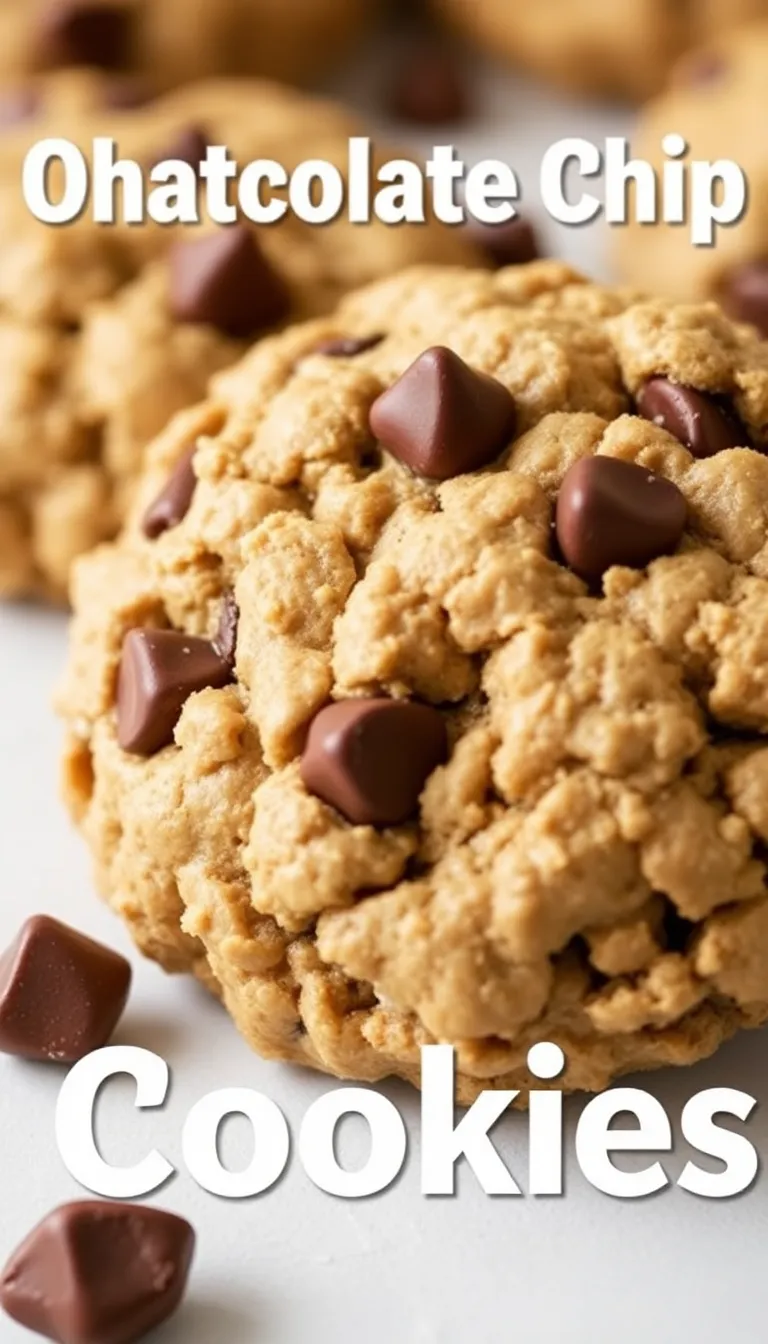Picture this: a cookie so good it makes store-bought versions taste like cardboard. Chewy, slightly crisp edges, pockets of melted chocolate, and just enough oatmeal to pretend it’s healthy. This isn’t just another recipe—it’s the one your future self will thank you for.
Why settle for mediocrity when greatness is 30 minutes away? Let’s get to it.
Why This Recipe Works
The magic lies in the balance. Too much oatmeal, and you’re eating granola.
Too little, and it’s just a sad chocolate chip cookie. This recipe nails the texture—chewy but not dense, sweet but not cloying. The brown sugar adds depth, the vanilla punches up the flavor, and the chocolate?
Well, that’s just happiness in chip form.
Ingredients You’ll Need
- 1 cup (2 sticks) unsalted butter, softened (because melted butter is a one-way ticket to flat cookies)
- 1 cup brown sugar (packed, because we’re not here to play games)
- ½ cup granulated sugar (for that perfect crisp edge)
- 2 large eggs (room temperature, unless you enjoy lumpy dough)
- 2 tsp vanilla extract (real stuff, not the sad imitation kind)
- 1 ½ cups all-purpose flour (spooned and leveled, unless you want hockey pucks)
- 1 tsp baking soda (fresh, because expired soda is just salt)
- ½ tsp salt (to make the sweet stuff pop)
- 3 cups old-fashioned oats (not instant—this isn’t oatmeal soup)
- 2 cups chocolate chips (or chunks, because more chocolate is never wrong)
Step-by-Step Instructions
- Preheat your oven to 350°F (175°C). Line baking sheets with parchment paper unless you enjoy scraping cookies off pans.
- Cream butter and sugars in a large bowl until fluffy (about 2-3 minutes). If your arm hurts, you’re doing it right.
- Add eggs one at a time, mixing well after each.
Then, mix in the vanilla. No one likes eggy dough surprises.
- Whisk dry ingredients (flour, baking soda, salt) in a separate bowl. Dump it into the wet mix and stir until just combined.
- Fold in oats and chocolate chips.
Resist eating the dough—raw eggs are a gamble.
- Scoop dough into 1.5-inch balls and space them 2 inches apart on the baking sheet. They spread. Trust us.
- Bake for 10-12 minutes until edges are golden but centers are still soft.
Overbaking is a crime.
- Let cool on the pan for 5 minutes, then transfer to a rack. Patience is a virtue, but no one will judge if you eat one warm.
How to Store These Beauties
Room temperature: Keep in an airtight container for up to 5 days (if they last that long). Freezer: Freeze dough balls or baked cookies for up to 3 months. Pro tip: Frozen cookie dough is the ultimate emergency snack.
Why This Recipe Is a Game-Changer
Oatmeal adds fiber, making these cookies slightly less guilty.
They’re versatile (breakfast? dessert? both?), crowd-pleasing, and easy to customize. Plus, they’re sturdy enough for shipping—unlike those delicate shortbread cookies that crumble if you breathe on them.
Common Mistakes to Avoid
- Overmixing the dough: Gluten development = tough cookies. Mix until just combined.
- Using melted butter: It spreads too much.
Softened butter is the way.
- Baking on hot pans: Always cool pans between batches unless you enjoy uneven cookies.
- Skimping on salt: It’s the flavor booster. Don’t leave it out.
Swaps and Substitutions
Gluten-free? Use a 1:1 GF flour blend. Vegan? Swap butter for coconut oil and eggs for flax eggs. Raisin hater? More chocolate chips. Oat hater? Why are you here?
FAQs
Can I use quick oats instead of old-fashioned?
Technically yes, but the texture will be denser. Old-fashioned oats give that perfect chew.
Why are my cookies flat?
Butter was too soft or melted, or your baking soda is older than your Netflix subscription.
Check both.
Can I freeze the dough?
Absolutely. Scoop into balls, freeze on a tray, then transfer to a bag. Bake straight from frozen—just add 1-2 minutes.
Can I reduce the sugar?
Sure, but the texture and spread will change.
IMO, life’s too short for less sugar.
Final Thoughts
This isn’t just a cookie recipe—it’s a life upgrade. Easy, flexible, and guaranteed to impress. Bake them, share them (or don’t), and revel in the glory of being the person who makes those cookies.
Now go preheat that oven.






